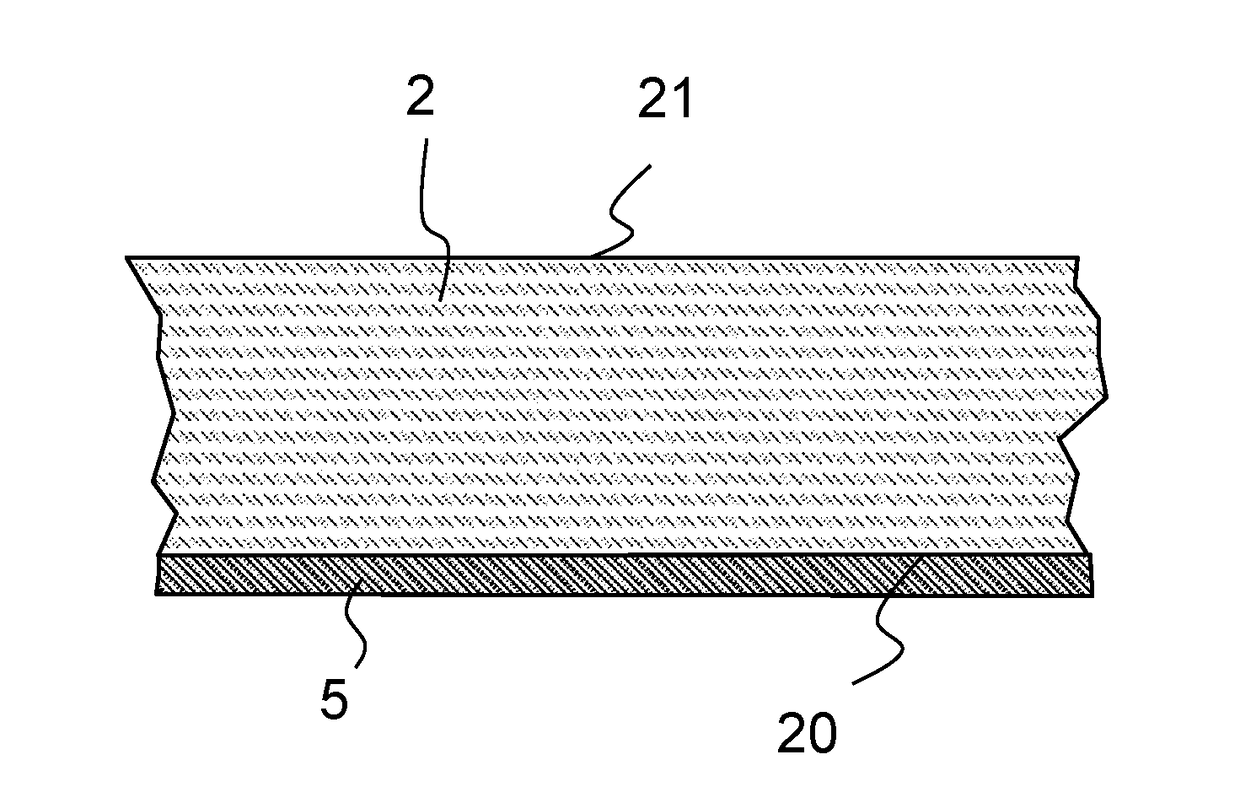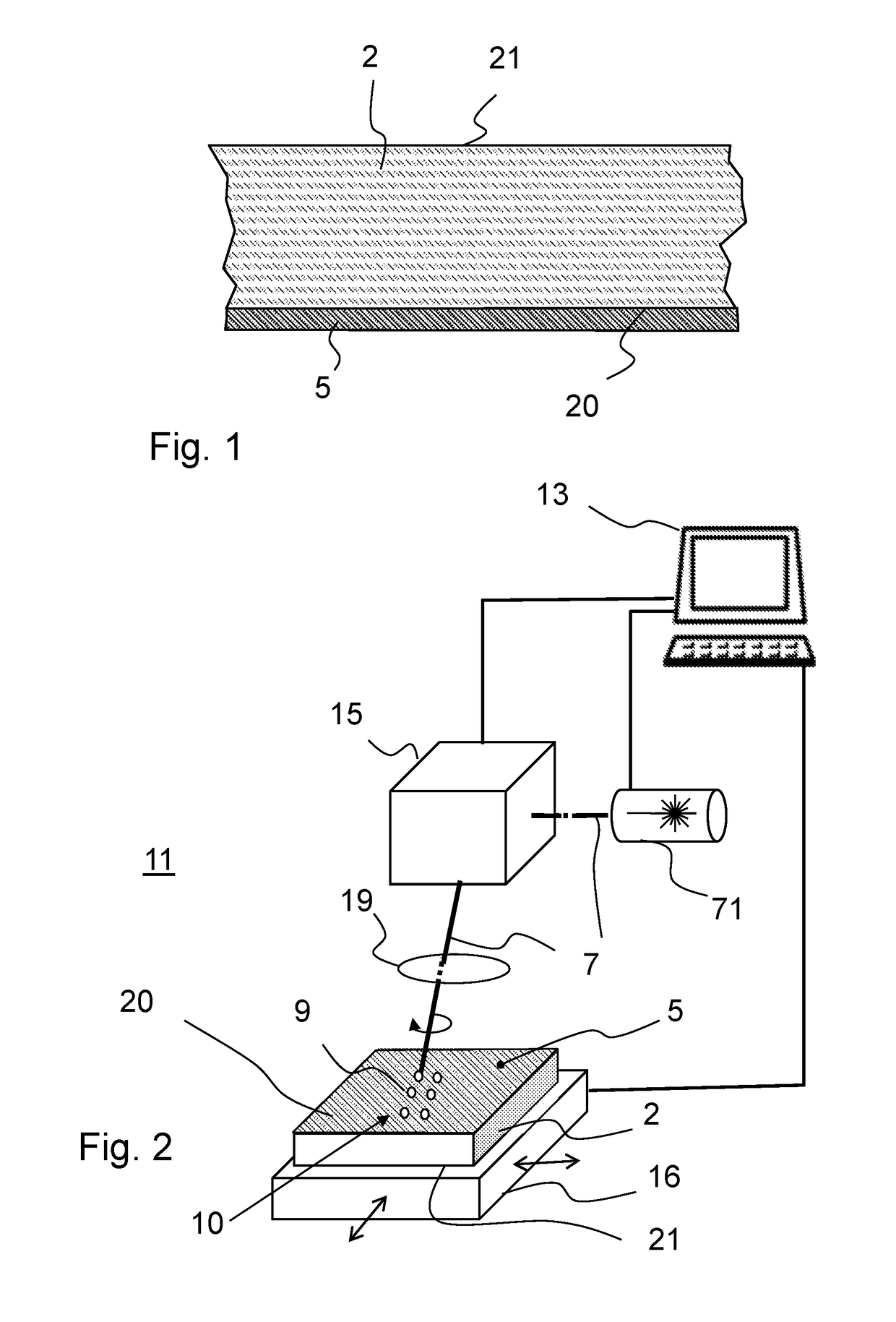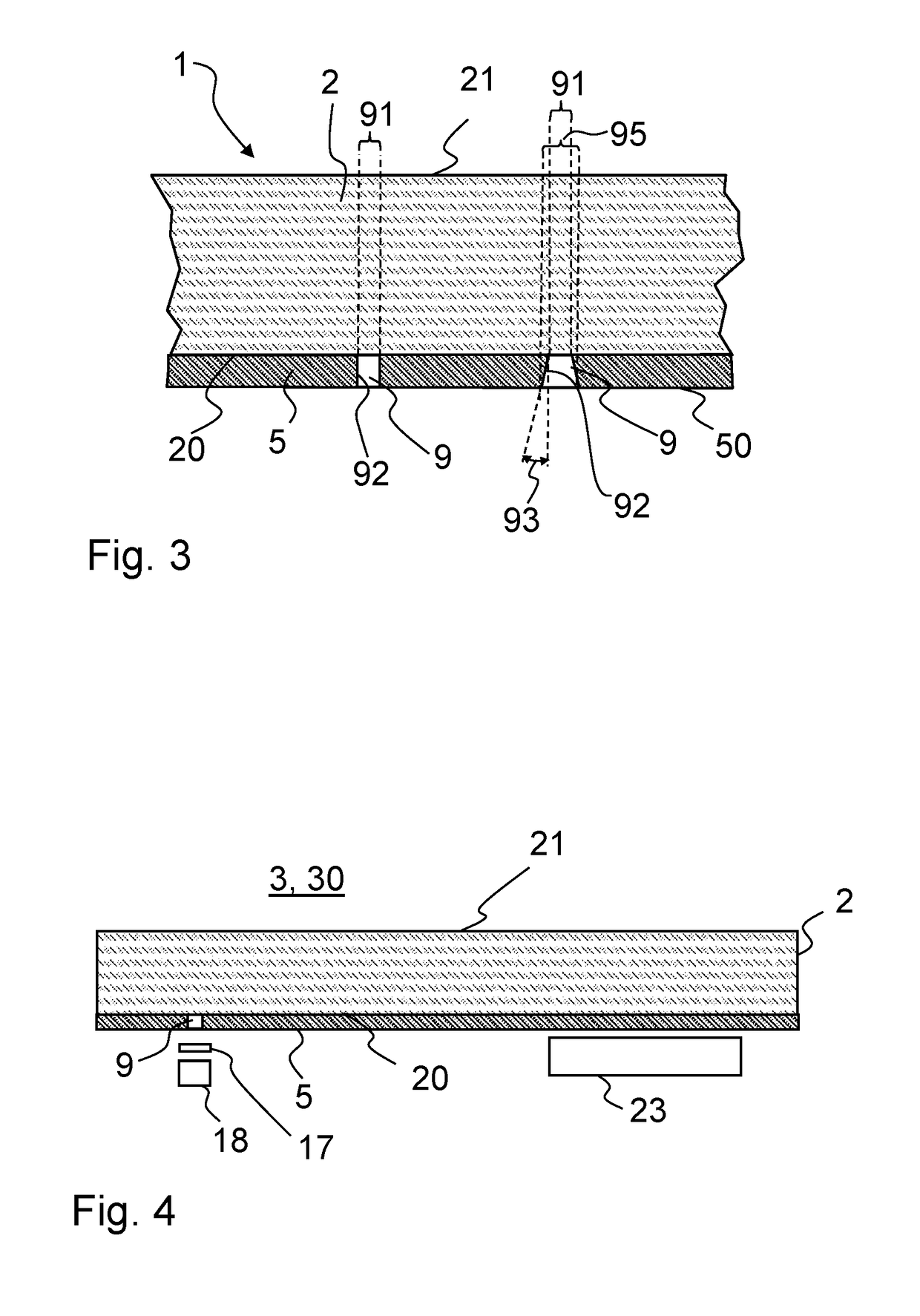Coated glass or glass ceramic article
- Summary
- Abstract
- Description
- Claims
- Application Information
AI Technical Summary
Benefits of technology
Problems solved by technology
Method used
Image
Examples
Embodiment Construction
[0056]For producing a glass or glass ceramic article according to the invention, initially a planar or sheet-like glass or glass ceramic substrate 2 is provided. Accordingly, the glass or glass ceramic substrate 2 has two opposite faces 20, 21. One of the faces is provided with an opaque or lightproof layer 5, in the example shown in FIG. 1 this is face 20.
[0057]Particularly preferred coatings 5 include inorganic and / or inorganically-organically modified sol-gel coatings. The oxidic network may preferably consist of SiO2, TiO2, ZrO2, Al2O3 components. The network may moreover include organic residues.
[0058]Pigments that may be added in particular include color-imparting pigments in the form of metal oxides, in particular cobalt oxides / spinels, cobalt-aluminum spinels, cobalt-aluminum-zinc oxides, cobalt-aluminum-silicon oxides, cobalt-titanium spinels, cobalt-chromium spinels, cobalt-aluminum-chromium oxides, cobalt-nickel-manganese-iron-chromium oxides / spinels, cobalt-nickel-zinc-t...
PUM
| Property | Measurement | Unit |
|---|---|---|
| Length | aaaaa | aaaaa |
| Fraction | aaaaa | aaaaa |
| Fraction | aaaaa | aaaaa |
Abstract
Description
Claims
Application Information
 Login to View More
Login to View More - R&D
- Intellectual Property
- Life Sciences
- Materials
- Tech Scout
- Unparalleled Data Quality
- Higher Quality Content
- 60% Fewer Hallucinations
Browse by: Latest US Patents, China's latest patents, Technical Efficacy Thesaurus, Application Domain, Technology Topic, Popular Technical Reports.
© 2025 PatSnap. All rights reserved.Legal|Privacy policy|Modern Slavery Act Transparency Statement|Sitemap|About US| Contact US: help@patsnap.com



